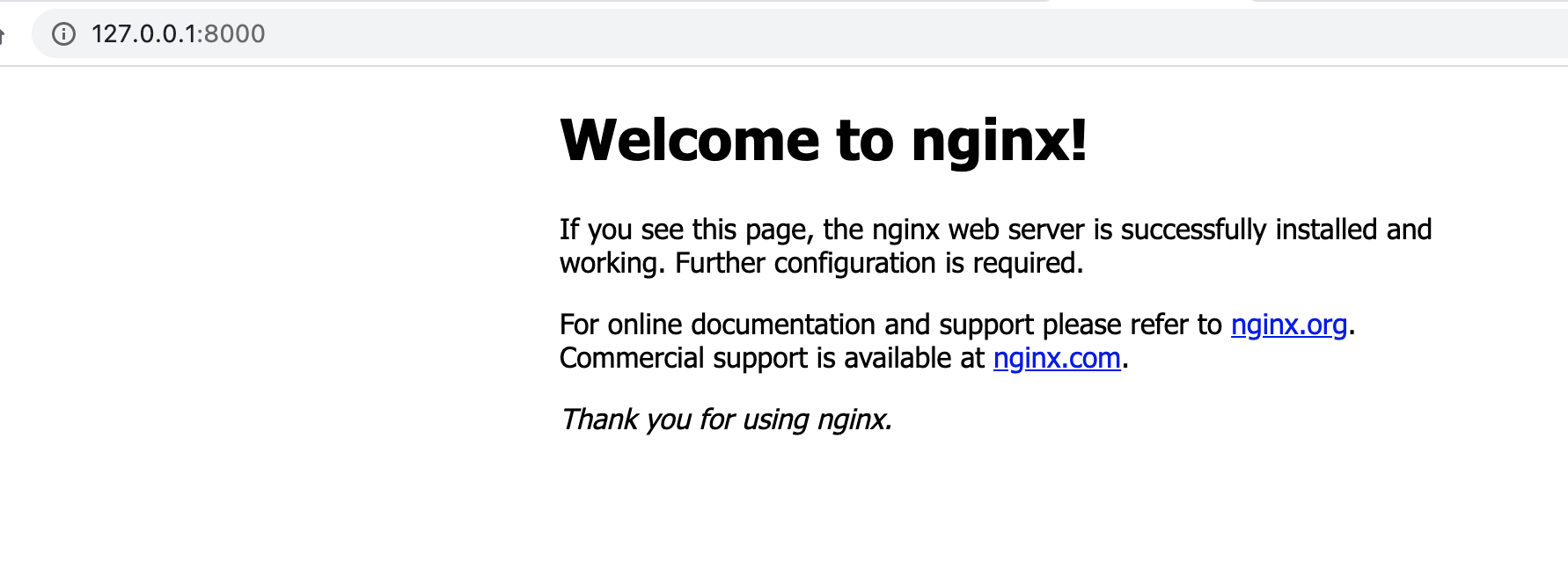main.tf
terraform {
required_providers {
docker = {
source = "kreuzwerker/docker"
}
}
}
provider "docker" {}
resource "docker_image" "nginx" {
name = "nginx:latest"
keep_locally = false
}
resource "docker_container" "nginx" {
image = docker_image.nginx.latest
name = "tutorial"
ports {
internal = 80
external = 8000
}
}
执行
➜ docker terraform plan
An execution plan has been generated and is shown below.
Resource actions are indicated with the following symbols:
+ create
Terraform will perform the following actions:
# docker_container.nginx will be created
+ resource "docker_container" "nginx" {
+ attach = false
+ bridge = (known after apply)
+ command = (known after apply)
+ container_logs = (known after apply)
+ entrypoint = (known after apply)
+ env = (known after apply)
+ exit_code = (known after apply)
+ gateway = (known after apply)
+ hostname = (known after apply)
+ id = (known after apply)
+ image = (known after apply)
+ init = (known after apply)
+ ip_address = (known after apply)
+ ip_prefix_length = (known after apply)
+ ipc_mode = (known after apply)
+ log_driver = "json-file"
+ logs = false
+ must_run = true
+ name = "tutorial"
+ network_data = (known after apply)
+ read_only = false
+ remove_volumes = true
+ restart = "no"
+ rm = false
+ security_opts = (known after apply)
+ shm_size = (known after apply)
+ start = true
+ stdin_open = false
+ tty = false
+ healthcheck {
+ interval = (known after apply)
+ retries = (known after apply)
+ start_period = (known after apply)
+ test = (known after apply)
+ timeout = (known after apply)
}
+ labels {
+ label = (known after apply)
+ value = (known after apply)
}
+ ports {
+ external = 8000
+ internal = 80
+ ip = "0.0.0.0"
+ protocol = "tcp"
}
}
# docker_image.nginx will be created
+ resource "docker_image" "nginx" {
+ id = (known after apply)
+ keep_locally = false
+ latest = (known after apply)
+ name = "nginx:latest"
+ output = (known after apply)
}
Plan: 2 to add, 0 to change, 0 to destroy.
------------------------------------------------------------------------
Note: You didn't specify an "-out" parameter to save this plan, so Terraform
can't guarantee that exactly these actions will be performed if
"terraform apply" is subsequently run.
➜ docker terraform apply
An execution plan has been generated and is shown below.
Resource actions are indicated with the following symbols:
+ create
Terraform will perform the following actions:
# docker_container.nginx will be created
+ resource "docker_container" "nginx" {
+ attach = false
+ bridge = (known after apply)
+ command = (known after apply)
+ container_logs = (known after apply)
+ entrypoint = (known after apply)
+ env = (known after apply)
+ exit_code = (known after apply)
+ gateway = (known after apply)
+ hostname = (known after apply)
+ id = (known after apply)
+ image = (known after apply)
+ init = (known after apply)
+ ip_address = (known after apply)
+ ip_prefix_length = (known after apply)
+ ipc_mode = (known after apply)
+ log_driver = "json-file"
+ logs = false
+ must_run = true
+ name = "tutorial"
+ network_data = (known after apply)
+ read_only = false
+ remove_volumes = true
+ restart = "no"
+ rm = false
+ security_opts = (known after apply)
+ shm_size = (known after apply)
+ start = true
+ stdin_open = false
+ tty = false
+ healthcheck {
+ interval = (known after apply)
+ retries = (known after apply)
+ start_period = (known after apply)
+ test = (known after apply)
+ timeout = (known after apply)
}
+ labels {
+ label = (known after apply)
+ value = (known after apply)
}
+ ports {
+ external = 8000
+ internal = 80
+ ip = "0.0.0.0"
+ protocol = "tcp"
}
}
# docker_image.nginx will be created
+ resource "docker_image" "nginx" {
+ id = (known after apply)
+ keep_locally = false
+ latest = (known after apply)
+ name = "nginx:latest"
+ output = (known after apply)
}
Plan: 2 to add, 0 to change, 0 to destroy.
Do you want to perform these actions?
Terraform will perform the actions described above.
Only 'yes' will be accepted to approve.
Enter a value: yes
docker_image.nginx: Creating...
docker_image.nginx: Creation complete after 0s [id=sha256:daee903b4e436178418e41d8dc223b73632144847e5fe81d061296e667f16ef2nginx:latest]
docker_container.nginx: Creating...
docker_container.nginx: Creation complete after 0s [id=d5c49635d9b655575129dde9636963a172111c9f10dc03615109c0000ee80683]
Apply complete! Resources: 2 added, 0 changed, 0 destroyed.
➜ docker ls
main.tf terraform.tfstate
➜ docker pwd
/Users/15b883/terraform/docker
➜ docker terraform show
# docker_container.nginx:
resource "docker_container" "nginx" {
attach = false
command = [
"nginx",
"-g",
"daemon off;",
]
cpu_shares = 0
entrypoint = [
"/docker-entrypoint.sh",
]
env = []
gateway = "172.17.0.1"
hostname = "d5c49635d9b6"
id = "d5c49635d9b655575129dde9636963a172111c9f10dc03615109c0000ee80683"
image = "sha256:daee903b4e436178418e41d8dc223b73632144847e5fe81d061296e667f16ef2"
init = false
ip_address = "172.17.0.2"
ip_prefix_length = 16
ipc_mode = "private"
log_driver = "json-file"
logs = false
max_retry_count = 0
memory = 0
memory_swap = 0
must_run = true
name = "tutorial"
network_data = [
{
gateway = "172.17.0.1"
global_ipv6_address = ""
global_ipv6_prefix_length = 0
ip_address = "172.17.0.2"
ip_prefix_length = 16
ipv6_gateway = ""
network_name = "bridge"
},
]
network_mode = "default"
privileged = false
publish_all_ports = false
read_only = false
remove_volumes = true
restart = "no"
rm = false
security_opts = []
shm_size = 64
start = true
stdin_open = false
tty = false
ports {
external = 8000
internal = 80
ip = "0.0.0.0"
protocol = "tcp"
}
}
# docker_image.nginx:
resource "docker_image" "nginx" {
id = "sha256:daee903b4e436178418e41d8dc223b73632144847e5fe81d061296e667f16ef2nginx:latest"
keep_locally = false
latest = "sha256:daee903b4e436178418e41d8dc223b73632144847e5fe81d061296e667f16ef2"
name = "nginx:latest"
}
➜ docker docker ps
CONTAINER ID IMAGE COMMAND CREATED STATUS PORTS NAMES
d5c49635d9b6 daee903b4e43 "/docker-entrypoint.…" 59 seconds ago Up 58 seconds 0.0.0.0:8000->80/tcp tutorial
